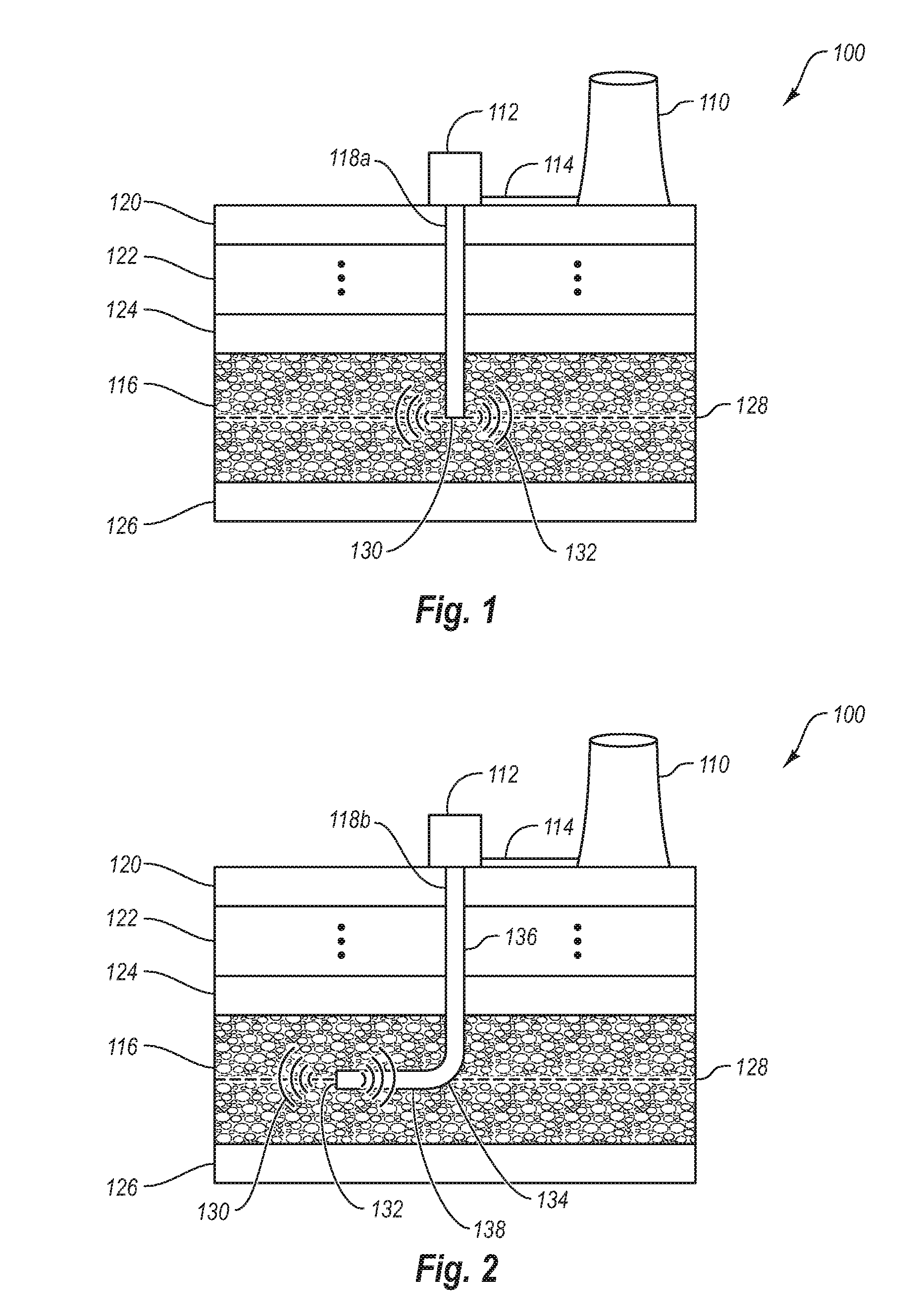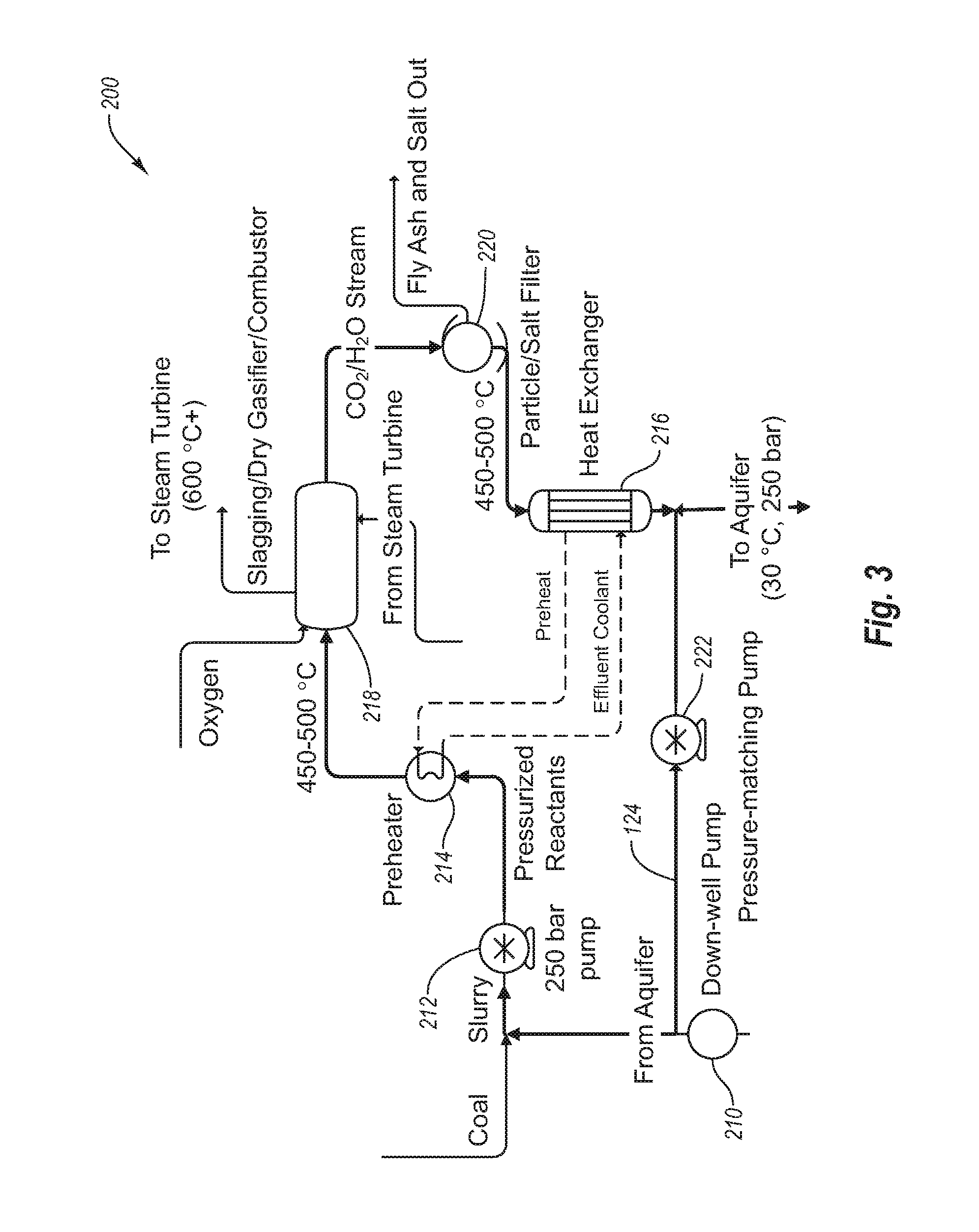Methods for stable sequestration of carbon dioxide in an aquifer
a carbon dioxide and aquifer technology, applied in the direction of sustainable packaging industry, separation process, borehole/well accessories, etc., to achieve stable sequestration, large percentage, and stable sequestration
- Summary
- Abstract
- Description
- Claims
- Application Information
AI Technical Summary
Benefits of technology
Problems solved by technology
Method used
Image
Examples
Embodiment Construction
I. Introduction
[0023]The methods disclosed herein relate to sequestering carbon dioxide in an aquifer by trapping the CO2 in interstitial pores of the aquifer in addition to dissolving the CO2 in the fluid. Trapping the CO2 in the interstitial pores of the aquifer stabilizes the CO2 from essential the time of injection, preventing the sequestered CO2 from escaping back to the surface, and greatly increases the storage capacity of the aquifer compared to fluid dissolution alone.
[0024]For purposes of this invention, a “CO2 stream” as used herein refers to a fluid with a substantially higher concentration (e.g., greater than 1.0 vol %) of carbon dioxide compared to “naturally existing” atmospheric air, which has less than about 0.04 vol % carbon dioxide. However, in most cases a much higher concentration of CO2 is desired do avoid the expense associated with sequestering gases other than CO2.
[0025]For purposes of the present invention, the term “horizontal well” refers to a well shaft ...
PUM
| Property | Measurement | Unit |
|---|---|---|
| vol % | aaaaa | aaaaa |
| diameter | aaaaa | aaaaa |
| thickness | aaaaa | aaaaa |
Abstract
Description
Claims
Application Information
 Login to View More
Login to View More - R&D
- Intellectual Property
- Life Sciences
- Materials
- Tech Scout
- Unparalleled Data Quality
- Higher Quality Content
- 60% Fewer Hallucinations
Browse by: Latest US Patents, China's latest patents, Technical Efficacy Thesaurus, Application Domain, Technology Topic, Popular Technical Reports.
© 2025 PatSnap. All rights reserved.Legal|Privacy policy|Modern Slavery Act Transparency Statement|Sitemap|About US| Contact US: help@patsnap.com



